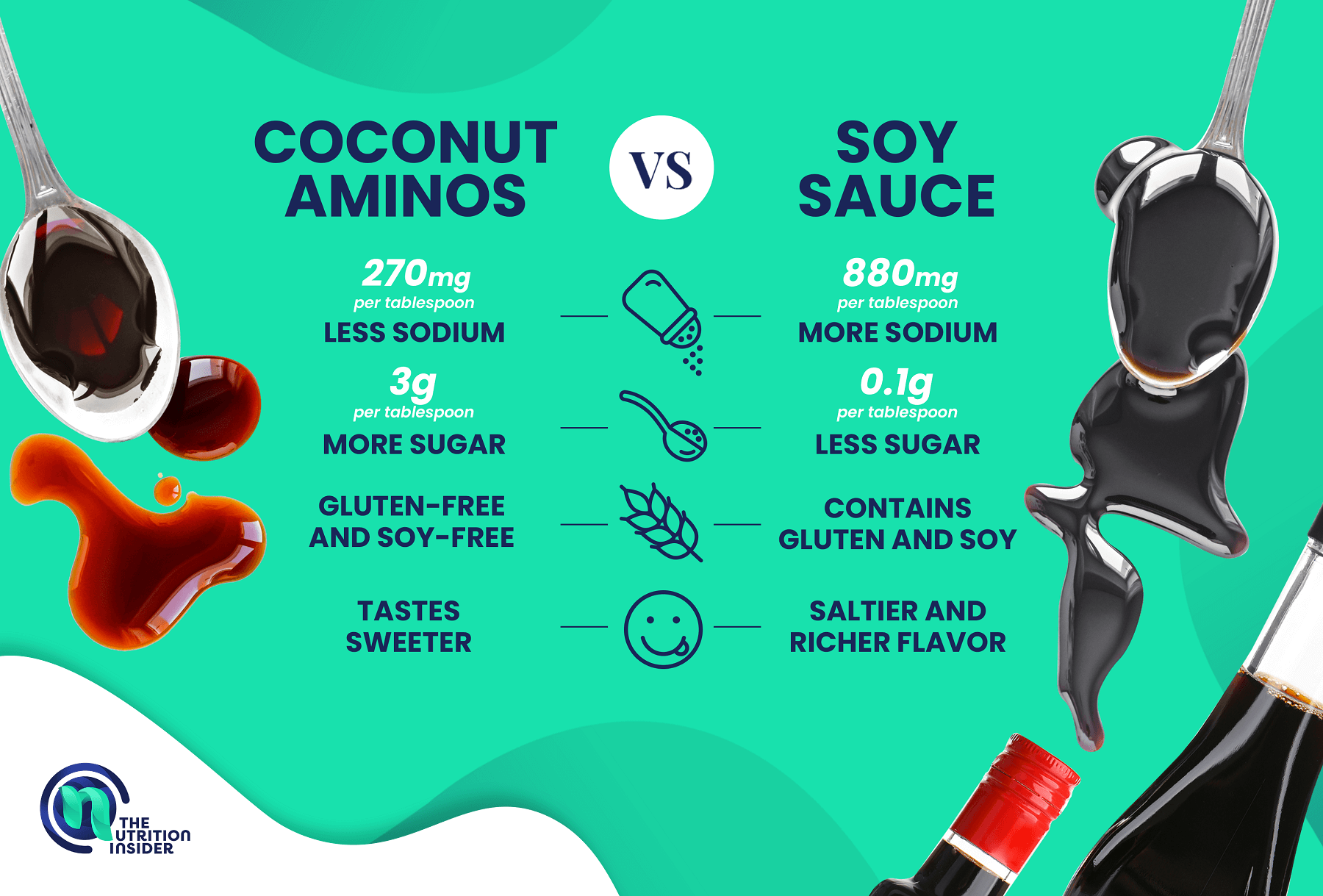Coconut Aminos vs Soy Sauce: Exploring the Key Differences and Benefits
Coconut aminos and soy sauce are both popular condiments used in various cuisines worldwide. While they share some similarities, they also possess distinct characteristics that set them apart. In this article, we will delve into the key differences between coconut aminos and soy sauce, exploring their origins, ingredients, flavor profiles, nutritional values, and potential health benefits. Whether you are looking for a gluten-free alternative, a lower-sodium option, or simply a new flavor to enhance your dishes, understanding the contrasts between these two sauces will help you make an informed choice.

Coconut aminos vs soy sauce
1. Origins:
Coconut aminos:
Coconut aminos is derived from the sap of coconut blossoms.
It has its roots in Southeast Asian cuisine and is often associated with traditional dishes from the Philippines and Indonesia.
The sap undergoes a fermentation process, resulting in a savory, umami flavor.
Soy sauce:
Soy sauce, on the other hand, has its origins in China and dates back thousands of years.
It is made from fermented soybeans, roasted grains, water, and salt.
Soy sauce has become a staple in many Asian cuisines, including Chinese, Japanese, Korean, and Vietnamese.
2. Ingredients:
Coconut aminos:
Coconut aminos is prized for being soy-free, gluten-free, and low in sodium.
The main ingredients in coconut aminos include coconut blossom sap, sea salt, and sometimes vinegar.
This makes it suitable for individuals with dietary restrictions or those seeking healthier alternatives.

Coconut aminos
Soy sauce:
Traditional soy sauce contains soybeans, wheat, water, and salt.
However, there are also gluten-free versions available that use alternative grains like rice or tamari sauce, which is made solely from fermented soybeans.
It is worth noting that individuals with soy or wheat allergies should opt for gluten-free or tamari soy sauce.
3. Flavor Profile:
Coconut aminos:
Coconut aminos offers a subtly sweet and slightly salty taste. It has a milder flavor compared to soy sauce, making it an excellent option for those who prefer a less overpowering umami taste.
The natural sweetness of coconut aminos adds depth to dishes without being overly sugary.
Soy sauce:
Soy sauce boasts a rich, robust umami flavor with a salty kick. Its complex taste is often described as savory, earthy, and full-bodied.
The intensity of soy sauce can vary depending on the brewing process and regional preferences.
4. Nutritional Value:
Coconut aminos:
Coconut aminos are a source of essential amino acids, vitamins, and minerals.
They are notably lower in sodium compared to soy sauce, which is beneficial for individuals monitoring their salt intake.
Additionally, coconut aminos contain trace amounts of B vitamins and potassium.
Soy sauce:
Soy sauce provides a good amount of protein and essential amino acids.
However, it is relatively high in sodium, so individuals on a low-sodium diet should consume it in moderation.
Soy sauce also contains iron, magnesium, and some B vitamins.

Coconut Aminos vs Soy Sauce comp
5. Health Benefits:
Coconut aminos:
Due to its low sodium content and gluten-free nature, coconut aminos appeal to individuals with specific dietary needs.
It is also suitable for those following paleo, keto, or gluten-free diets. Moreover, coconut aminos contain naturally occurring enzymes that aid digestion.
Soy sauce:
Soy sauce contains antioxidants and is a source of beneficial plant compounds called phytochemicals.
These compounds may have anti-inflammatory properties and potentially offer protection against certain chronic diseases.
However, the high sodium content in soy sauce can be a concern for individuals with hypertension or those at risk of developing it.
In summary, while coconut aminos and soy sauce are both popular condiments, they differ in terms of origin, ingredients, flavor profile, nutritional value, and health benefits. Coconut aminos offer a soy-free, gluten-free, and lower-sodium alternative with a subtly sweet taste. On the other hand, soy sauce provides a robust umami flavor but is higher in sodium. Ultimately, the choice between these two condiments depends on individual preferences, dietary restrictions, and health considerations. Experimenting with both can open up new avenues of flavor and enhance various dishes in your culinary repertoire.